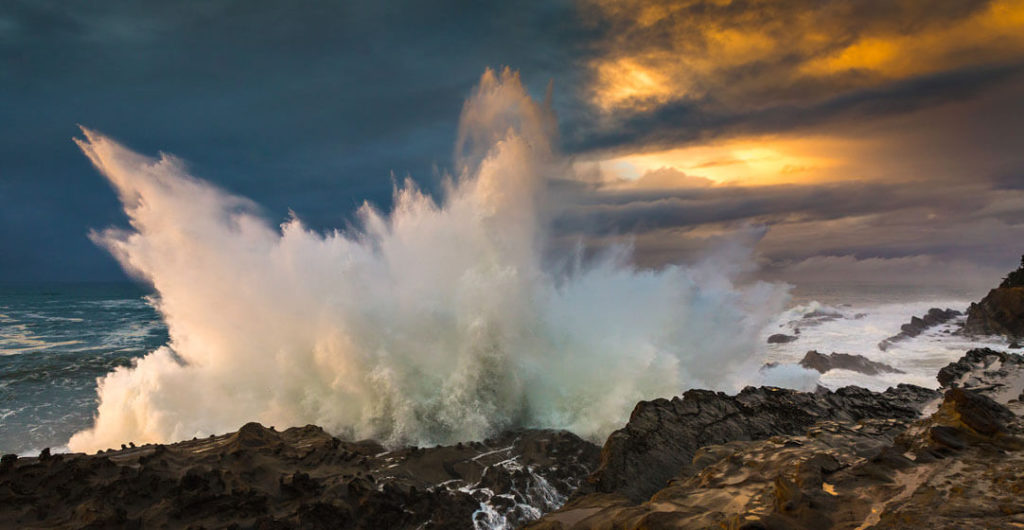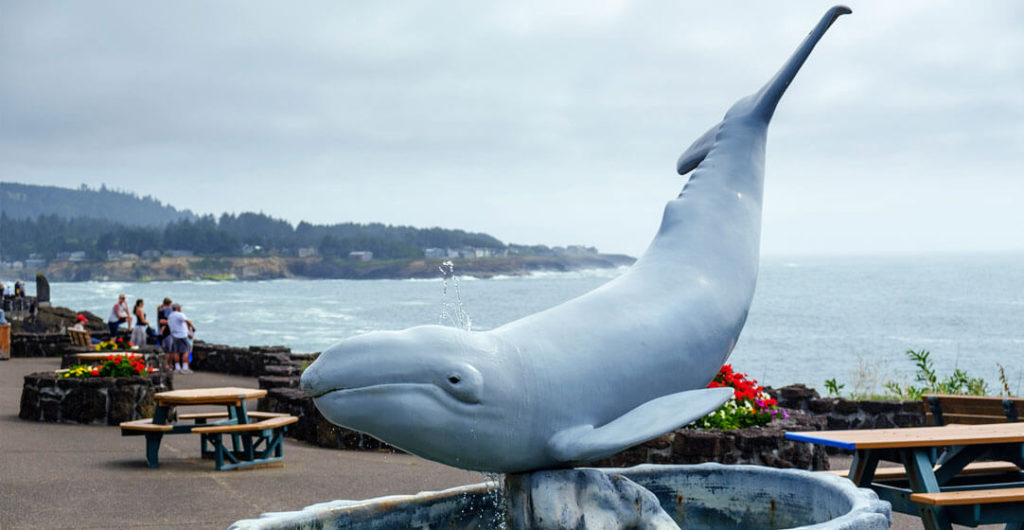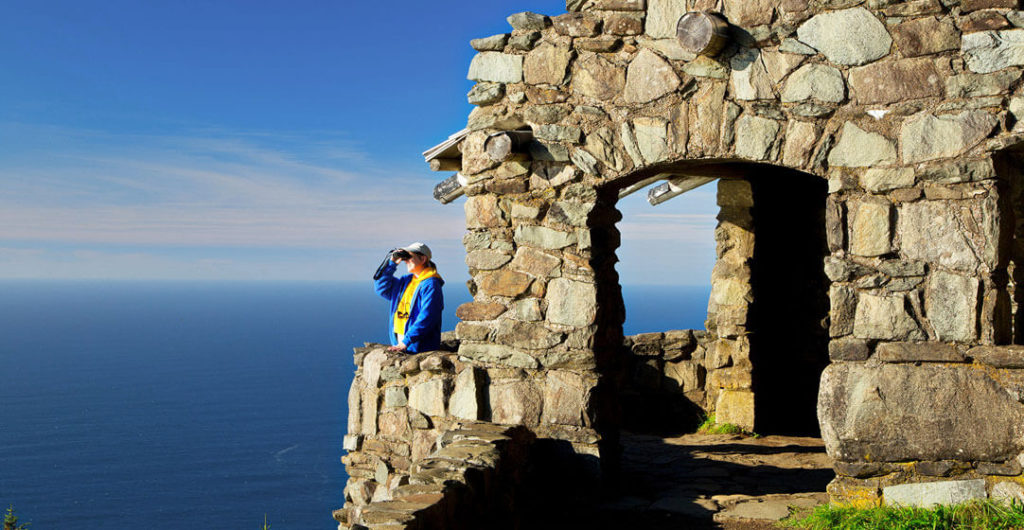Top Whale- and Storm-Watching Spots on Oregon’s Coast
Winter storm surges and spring whale watching are calling from the Beaver State’s rugged coastline. Find the best places to view stunning sights.
The captivating 363-mile Oregon Coast skirts small towns, breathtaking vistas and must-stop spots. Although our favorite rocky outcroppings and sandy shores of this mighty Pacific coastline are typically visited in the warmer months, the western edge of the Beaver State offers two unique experiences that make this destination a good year-round road trip: amazing storm watching and world class whale watching.

Big Swells
Roaring winds and large sea swells smash against Oregon’s rocky bluffs, spraying salt water high into the air. These monstrous waves viewed safely from an overlook are proof that a drive out to the coast is worth the trip in the winter.
The best viewing comes when inclement weather is matched with high tides. The highest tides of the year, known as king tides, arrive in November, December and January. Most storms hit the coast from November through March, presenting the perfect opportunity to view crashing waves on an otherwise dreary day.
One of the most accessible spots to see massive waves is Shore Acres State Park near Coos Bay. At the park you’ll find a covered, windowed hut with an unrestricted view of huge waves exploding against rugged rocks. Two miles south of Shore Acres, Cape Arago State Park is also a fantastic spot to see waves pound relentlessly against sea stacks.
Along the central Oregon Coast, three spots are scenic destinations for stormy and sunny days. Tillamook County is notable for its pounding surf during windy, wild weather. Waves slam the rocks to the north of Cape Kiwanda, while the action can be quite intense from the trails atop Cape Lookout State Park.

Depoe Bay
Farther south, Depoe Bay and Boiler Bay are great spots to watch a storm. In Depoe Bay, be sure to check out the spouting horn, where waves funnel into ever smaller spaces in the rocky ledges below the town’s seawall until the energy releases into a towering spout.
Past Yachats, a town about halfway down the coast, storm watchers can view storms from high above the waves or closer to shore. Above the turbulent waters, the Cape Perpetua Overlook offers a breathtaking view of the ocean. Farther down at Devil’s Churn, waves boil within a massive rock chasm while at Thor’s Well, the water thrashes about in a collapsed sea cave.
Located on the mouth of Columbia River, Fort Stevens State Park is a good option for those who don’t want to dip too far down the Oregon Coast. A platform overlooking the south jetty at Fort Stevens commands an impressive view.
A roughly 30-minute drive from Fort Stevens down the coast brings you to Cannon Beach, which is known for its view of Haystack Rock (featured in the 1985 film “The Goonies”). North of Cannon Beach, stop at Ecola State Park and Indian Beach, a secluded sandy beach popular with surfers. South of Cannon Beach, Oswald West State Park is also a good place for storm watching, if you don’t mind hiking in bad weather to get to coastal views.
All these locations make for incredible stops all year long. But remember that safety is paramount while storm watching. Do not enter the water and stay at least 100 feet away from the shoreline. Exposed rocks, jetties and driftwood logs are incredibly dangerous in storm surges.

Thar She Blows!
Whales can be spotted along Oregon’s coast year-round, but certain months are better. From mid-December through mid-January, more than 20,000 gray whales migrate south to Mexico’s Baja California Peninsula. Their northern migration from late March to May marks the return of spring with sightings of blow spouts a mile or so offshore. During their spring return to Alaska, the whales pass closer to the coast.
While most of the whales migrate farther north, a few hundred gray whales stick around the Oregon Coast for the summer and fall, with many lingering near Depoe Bay. They often are spotted just 50 feet to a quarter mile offshore, as they feast on mysid shrimp found at the edge of the region’s kelp beds. The Rocky Creek State Scenic Viewpoint and Boiler Bay are known for their great whale sightings.
The ideal weather for spotting whales offshore is a sunny day with a flat ocean. Bring your binoculars and look for the tell-tale sign of a whale spout. Gray whales typically surface every 20 seconds as they swim but may stay underwater for three to five minutes when feeding. After these extended periods below water, they usually blow five times when they surface to replenish their oxygen supply.
Gray whales aren’t the only creatures in the water. Around the end of April and early May, transient orcas swim down from the Salish Sea and beyond to feast. Harbor seals are usually born in the late spring in the Pacific Northwest, giving plenty of wildlife watching opportunities at a viewpoint.
Oregon State Parks has 24 designated whale watching sites down the coast. The migration is celebrated twice per year in late December and late March during Whale Watch Weeks. During the events, volunteers are stationed at the best whale watching sites, and are eager to point out passing whales and share information. See this website for dates, exact locations and more information on this incredible event.
– Written by Douglas Scott, last updated in September 2022
– Top photo: view of Cannon Beach at Ecola State Park/Getty Images









